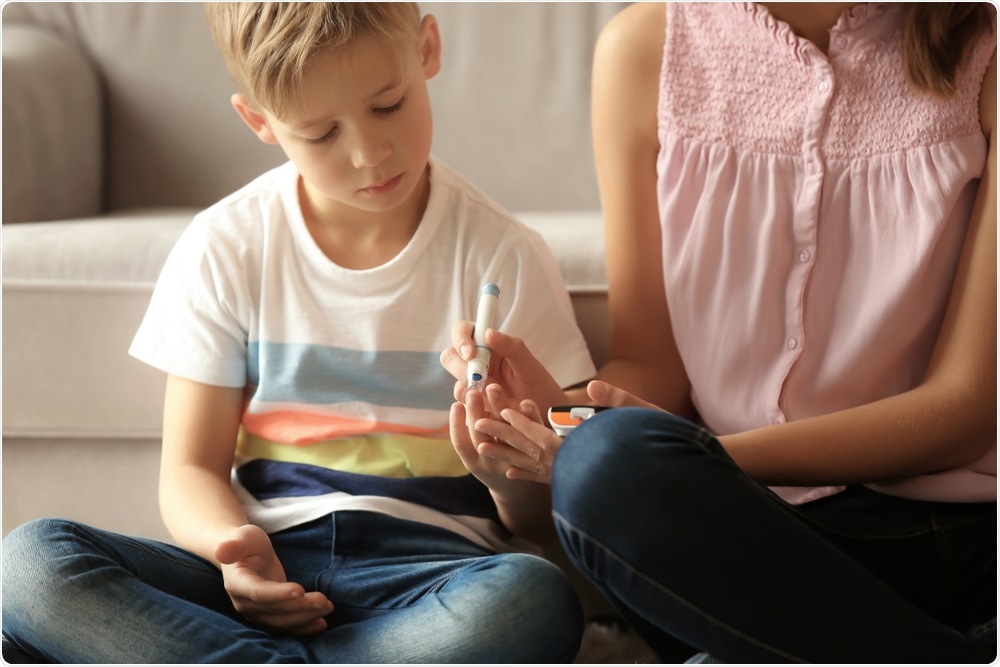Researchers at MIT and Samsung Advanced Institute of Technology have developed a new way to monitor blood sugar levels that could replace the often inconvenient and uncomfortable needle-prick method that people with diabetes currently use.

Image Credit: AfricaStudio/Shutterstock.com
Noninvasive glucose monitoring has been a technology in high demand to provide people in need with pain-free, convenient, and continuous or as frequent measurements as necessary,”
Peter So
People with diabetes are supposed to check their blood glucose level at numerous points throughout the day, but research has shown that many fail to do this as frequently as they should, partly due to the discomfort and inconvenience involved in pricking the finger with a needle.
“Pain-free, convenient, and continuous”
“Noninvasive blood glucose monitoring has been a long-standing dream in diabetes management,” write the researchers, who add that it would provide people with “pain-free, convenient, and continuous or as frequent measurements as necessary.”
The team has now made important progress in potentially making this non-invasive, pain-free option a reality.
The researchers have demonstrated that they can use a technique called Raman Spectroscopy to directly measure glucose levels in the skin. This non-invasive technique measures molecules in tissue based on how they scatter near-infrared light.
The team’s previous work
Researchers based in the Laser Biomedical Research Center at MIT have been developing these Raman sensors for more than two decades.
The laser beam used in Raman spectroscopy can only reach a depth of a few millimeters in tissue, so one important development was finding how to correlate sugar levels detected in the fluid around skin cells (interstitial fluid) with sugar levels in the blood.
However, another challenge faced was that the Raman signal generated by a molecule as small as glucose gets silenced by the strong signals generated by components such as proteins and lipids, explains lead author Jeon Woong Kang: “Glucose is a tiny, tiny amount out of the total signal. Because of that, so far we could not see the glucose signal from the measured signal.”
The researchers, therefore, found an indirect way to calculate sugar levels by comparing glucose levels in the skin with those in blood extracted at the same time. However, this involved frequent calibration and the calculations could be influenced by body movements and/or changes in the surrounding conditions.
Now the team can calculate blood glucose directly
As reported in the journal Science Advances, the team has now found a way to measure the glucose signal in the skin directly.
The near-infrared light penetrates the skin at an angle while the Raman signal is simultaneously collected from a bundle of optical fibers positioned near the skin.
“The fibers were custom-drawn to minimize fiber background signal,” explains the team. This meant a stronger Raman signal could be collected for glucose.
On testing the new method in animals, the researchers found it generated accurate glucose measurements (as verified by comparison with blood samples) for as long as one hour, whilst only requiring calibration for about ten minutes.
Our direct demonstration of glucose signal may quiet the long debate about whether glucose Raman spectra can be measured in vivo in transcutaneous glucose sensing,”
What’s next?
The team says the technology needs to be developed further if it is going to be used by people. The researchers say they need to make the device smaller and portable so that it can potentially be tested in clinical trials. Eventually, the researchers hope they can design a wearable device so that sugar levels can be measured continuously.
Source:
News.samsung.com. (2020). Samsung Researchers’ Non-Invasive Blood Glucose Monitoring Method Featured in ‘Science Advances’. [online] Available at: https://news.samsung.com/global/samsung-researchers-non-invasive-blood-glucose-monitoring-method-featured-in-science-advances [Accessed 29 Jan. 2020].
Journal reference:
Kang, J., Park, Y., Chang, H., Lee, W., Singh, S., Choi, W., Galindo, L., Dasari, R., Nam, S., Park, J. and So, P. (2020). Direct observation of glucose fingerprint using in vivo Raman spectroscopy. Science Advances, 6(4), p.eaay5206.